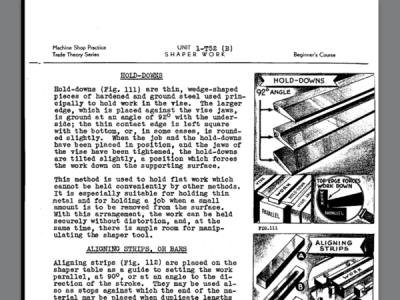Exactly correct,francist. I have hold downs down to 2" long. The 2" ones may have been shop made by a GOOD tool maker. They are usually 6" long. The 6" kurt vises have flat areas about 2"wide on either side of the center area,which is where the screw lives.
I have used that little 2" wide area to hold small jewelry master models. Just as the jaws of the vise reach the thick side of the hold downs,they begin to cock up as the vise is tightened. The thin side,which is against the work piece,rotates downwards,pulling the work piece down against the vise. Your work piece needs to have 2 parallel sides,opposite each other. If mine doesn't,I just super glue them down,as I mentioned before. Since I'm only using end mills about 1/32" wide,maybe up to 1/8" wide,the glue is plenty strong enough. I never have had a glued workpiece come loose.
To be functional,your hold downs need to be crisp and accurately ground so that the thin side has sharp edges so they grasp the work as it is being pulled downwards. This has to be done in a surface grinder,or a tool and cutter grinder. I have never seen a pair of hold downs that had dulled corners. They aren't a tool that is used often,and are made of good tool steel that is hardened.

